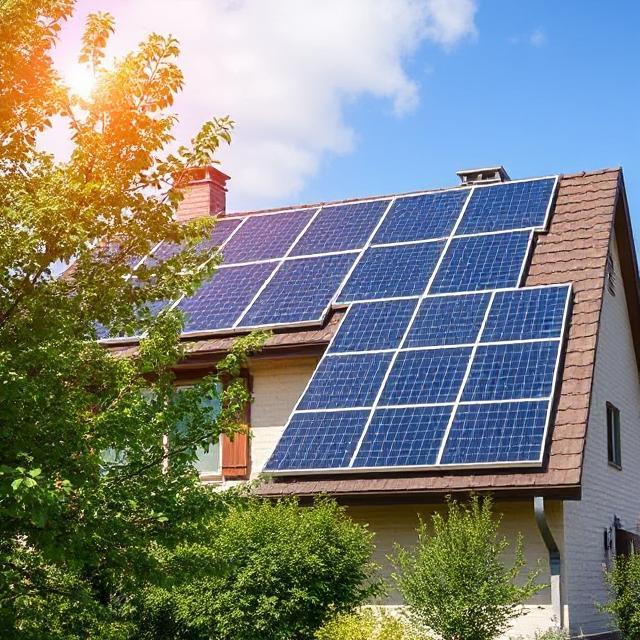Are residential solar panels an investment or fail in Sydney?
Aug/07/2025 02:19:05

For many Australian homeowners, the idea of installing residential solar panels has shifted from being an eco-conscious decision to a financial one. With rising electricity costs, extreme weather patterns, and growing awareness of sustainability, the question is more relevant than ever: Are residential solar panels a smart investment or just another home improvement expense that takes too long to pay off?
Understanding whether solar is financially viable isn’t as straightforward as comparing bills. It depends on location, system size, government incentives, long-term planning, and even the design of your home. Yet, across most scenarios, solar is proving to be more than just a trend. It is evolving into a serious strategy for household cost control and energy independence.
In this blog, we’ll break down the financial implications of solar, explore real-world examples, and help you understand if it’s the right move for your home in the long run.
The upfront cost: A considered commitment
One of the biggest hurdles for most homeowners is the initial installation cost. Depending on system size, quality, and location, installing solar panels can cost anywhere between $3,000 and $10,000 or more. This figure includes the panels, inverter, and installation by a licensed technician.
At first glance, this can seem like a hefty expense. However, when you consider how much you're already paying for electricity; often between $200 and $400 per month, it starts to put things into perspective. Over ten years, that equates to $24,000 to $48,000 spent on power alone.
So, while the upfront payment may feel like a cost, it can act more like a prepaid electricity plan that shields you from price hikes for decades.
Case study: Emma's solar decision in Blacktown
Let’s consider Emma, a homeowner in Blacktown, NSW. Emma lives in a four-bedroom home with her husband and two children. In 2023, she was paying around $350 per month in electricity bills, amounting to $4,200 annually.
Emma chose to construct a 6.6 kW solar panel system for $6,800 after collecting government rebates because she was fed up with price increases and conscious of the environmental impact. Her solar installer estimated savings of around $1,300 per year based on average sunlight hours and usage.
Fast forward to 2029, and Emma has saved approximately $7,800. Her system has paid for itself and is now generating virtually free electricity. She’s also insulated herself from future energy cost spikes and increased the appeal of her property should she decide to sell.
Return on investment: Understanding the payback period
In solar energy terms, the payback period is how long it takes for the cost of installing a system to be recovered through energy savings. In most parts of Australia, the average payback period ranges from 4 to 7 years, depending on household usage, the size and efficiency of the system, and local weather conditions.
After the break-even point, any electricity your panels generate essentially becomes a return on investment. Tens of thousands of dollars can be saved by homeowners over the course of a typical solar system's 25-year lifespan.
Incentives that boost affordability
Government rebates play a significant role in reducing the upfront cost of residential solar panels. Under the Small-scale Renewable Energy Scheme (SRES), eligible homeowners receive financial support in the form of Small-scale Technology Certificates (STCs), which can be applied as discounts on the system price.
Additionally, some local councils and state-level programs offer interest-free loans, grants, or feed-in tariffs that pay you for excess electricity fed back into the grid. These benefits not only reduce the initial expense but also accelerate the return on investment.
Hidden benefits that add long-term value
Beyond energy savings, solar panels offer homeowners several other advantages. These include:
• Protection against grid outages (especially when paired with a battery)
• A lower carbon footprint
• Increased property appeal in energy-conscious markets
Solar is one of the few home improvements that offers financial and functional returns. Unlike renovating a kitchen or installing a pool, solar continues to work for you year after year without significant upkeep.
Maintenance and lifespan
Another financial consideration is system maintenance. Fortunately, most solar panels require minimal care beyond occasional cleaning and professional inspections. Inverter warranties usually span between 10 and 15 years, whereas panel warranties average 25 years.
This means your system can continue providing savings long after the initial investment is recouped.
Conclusion: A Long-term strategy, not a quick fix
So, do solar panels for homes represent an investment or a cost? The evidence strongly supports the view that solar is a long-term investment with compounding financial, environmental, and lifestyle returns.
Indeed, the return period is not immediate, and the initial outlay may be substantial. However, when you consider rising power prices, generous incentives, and long-lasting equipment, solar panels stand out as a proactive and financially smart decision.
For homeowners like Emma and thousands of others across Australia, solar isn't just about saving money today. It’s about making a confident and sustainable choice for the future. By thinking beyond the initial expense and focusing on long-term outcomes, residential solar panels can become one of the most impactful investments you’ll ever make for your home.
Posted by Anonymous




